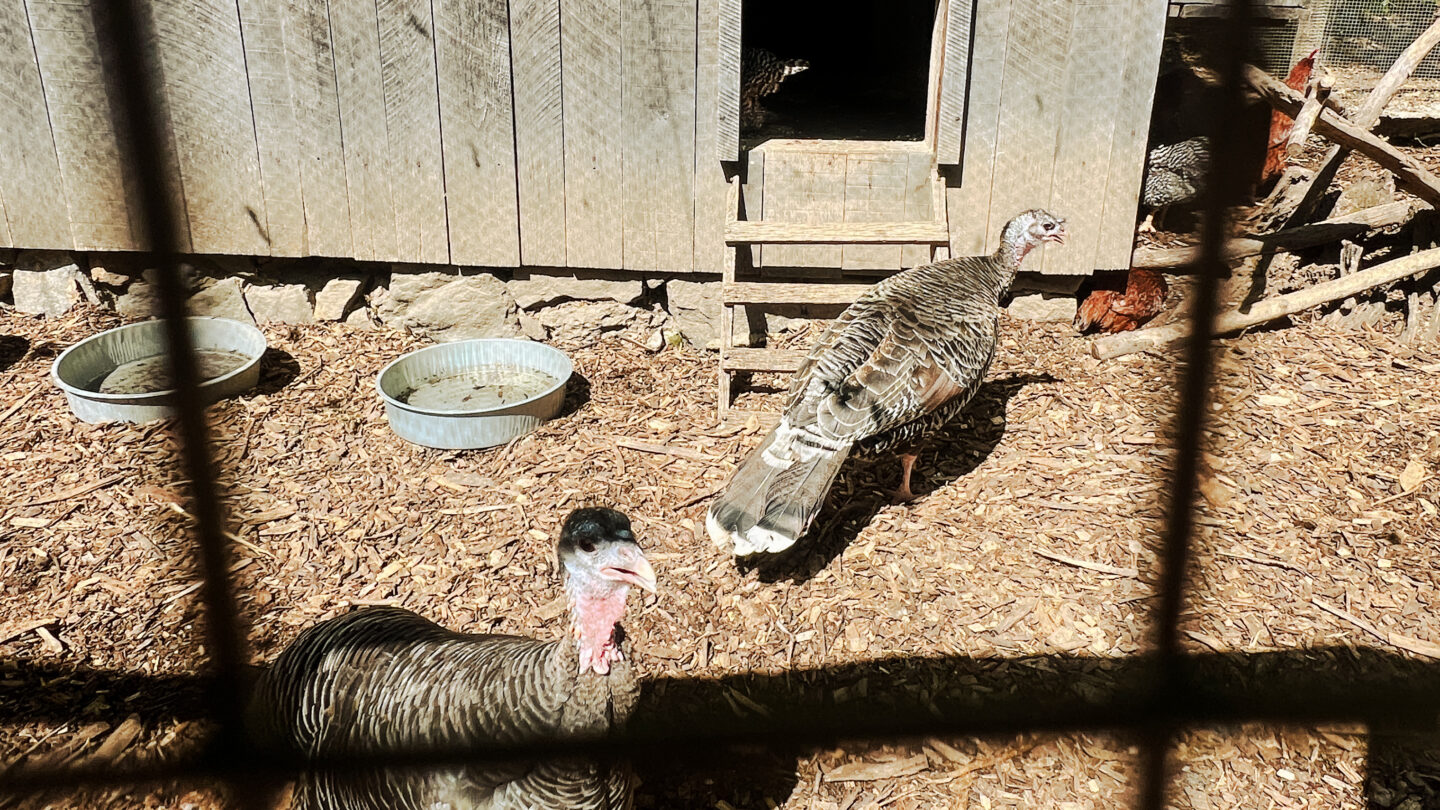It’s early on a Sunday morning, and our turkeys Gvna and Utlvyidedi are getting rides to the gardens building! Understand, I’m not grabbing our turkeys, one at a time, putting them in a carrier, and loading them in the back of a golf cart just so they can enjoy the scenery. Once a month I set these big birds on our livestock scale to weigh them.
Gvna—pronounced “GUH-nah”—means “turkey” in Cherokee. Utlvyidedi—pronounced “Ooo-TLA-ee-DAY-dee” is from the same language; it means “lucky.” We acquired the birds in November of 2021, and they truly were lucky; they had hatched just three months earlier and were still too small to be Thanksgiving birds. So, they got to come live at the Atlanta History Center’s Smith Farm instead. Their breed is called “Standard Bronze,” a domesticated variety similar in appearance to wild turkeys.

Weighing animals is a good practice to keep abreast of their health and well-being. We also weigh the sheep and goats monthly. Those four-footed animals generally have consistent weights—except, of course, these go down right after shearing from having heavy fleeces removed.
Our turkeys, on the other hand, have a very predictable pattern of weight gain and loss. They are at their heaviest in March. Then they lose between 0.5-1.5 pounds every month until September, when their weights start trending back up again, peaking again the following March.
What is the cause of this pattern? Beginning the first week in April and running through early August, Gvna and Utlvyidedi lay eggs. Usually, they both lay one egg every two days – and their eggs are big ones. While the United States Department of Agriculture says that the average Grade A large chicken egg weighs 56.8 grams, the turkey egg I put on my scale the other day was 80 grams. That’s about 2.8 ounces. At the rate they lay, this means that every 12 days they lose about a pound of mass courtesy of their egg production.
And how much do these birds themselves weigh? In March of 2024—again, remember this is when they are the heaviest—Gvna weighed 12 pounds; Utlvyidedi was 14.6 pounds. Knowing this leads us to more math. At twelve pounds of body weight, if Gvna lays a pound of eggs in twelve days, that means in less than two weeks she has lost 8.3% of her mass. As a reference point, this would be the human equivalent of losing 14 pounds in 2 weeks.
So, losing all that weight between April and August means it’s important to put Gvna and Utlvyidedi on the scale monthly to make sure their weight loss is where it should be, because a higher loss could indicate illness or that they are not eating enough to compensate for laying all those eggs.





